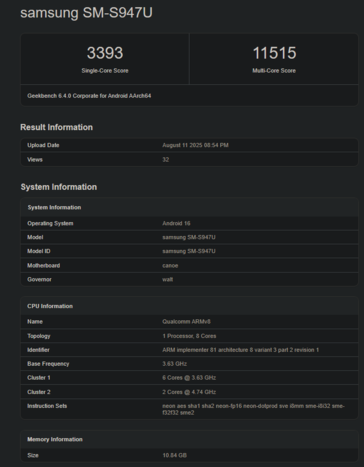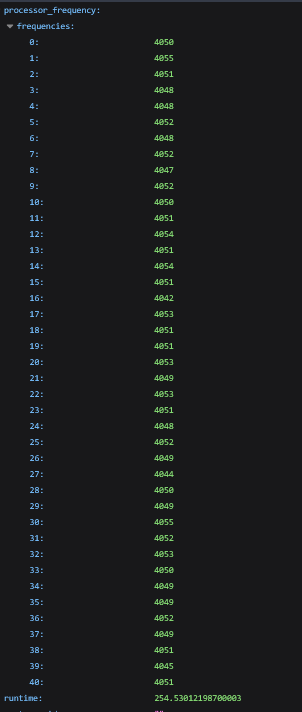After months of leaks, rumours and speculations, the Snapdragon 8 Elite 2 has finally surfaced on Geekbench. It comes a little before a month Qualcomm plans to unveil it in late September. We also get a peek at Samsung’s flagship Galaxy S26 Edge, codenamed SM-S947U. Hence, the chip in question here is likely the Snapdragon 8 Elite 2 For Galaxy.
It scores 3,393 points in Geekbench 6.4’s single-core test and 11,515 points in multi-core. The former is a little over 10% faster than the Snapdragon 8 Elite (3,087/8,571). Not nearly as impressive as the leaks made it out to be. However, a peek at Geekbench’s backend reveals the Snapdragon 8 Elite 2 for Galaxy in question isn’t running at full speed, with its CPU holding steady at 4.0 GHz instead of the full boost clock of 4.74 GHz. It is clear that a lot of performance is left on the table, but this is to be expected from a pre-production sample.
Snapdragon 8 Elite 2 specifications
Like its predecessor, the Snapdragon 8 Elite 2 uses a 6+2 CPU layout with the E-cores boosting up to 3.63 GHz. The SME (Scalable Matrix Extension) instruction set is also supported, as speculated by earlier leaks. The Galaxy S26 Edge sample in question has 12 GB of RAM and is running Android 16, likely an early build of One UI 8.0.
The above listing doesn’t bode well for Samsung’s Exynos 2600. While it beat the Snapdragon 8 Elite 2 to the punch in Geekbench appearances, its showing was less than stellar. Additionally, if the Galaxy S26 Edge uses a Snapdragon 8 Elite 2, it’s reasonable to assume the rest of the Galaxy S26 lineup will follow suit. Great news for end users; less so for Samsung Foundry.
I’ve been an avid PC gamer since the age of 8. My passion for gaming eventually pushed me towards general tech, and I got my first writing gig at the age of 19. I have a degree in mechanical engineering and have worked in the manufacturing industry and a few other publications like Wccftech before joining Notebookcheck in November 2019. I cover a variety of topics including smartphones, gaming, and computer hardware.
Source link





